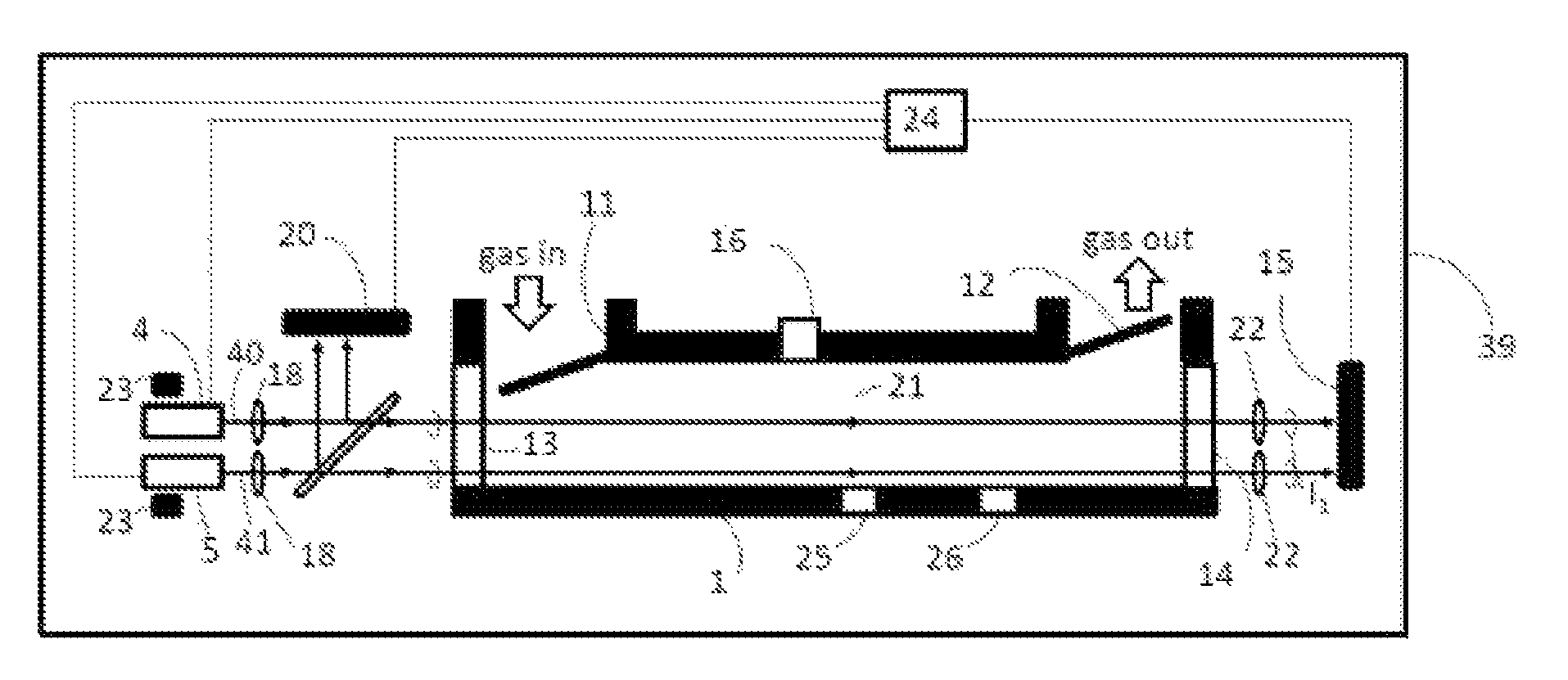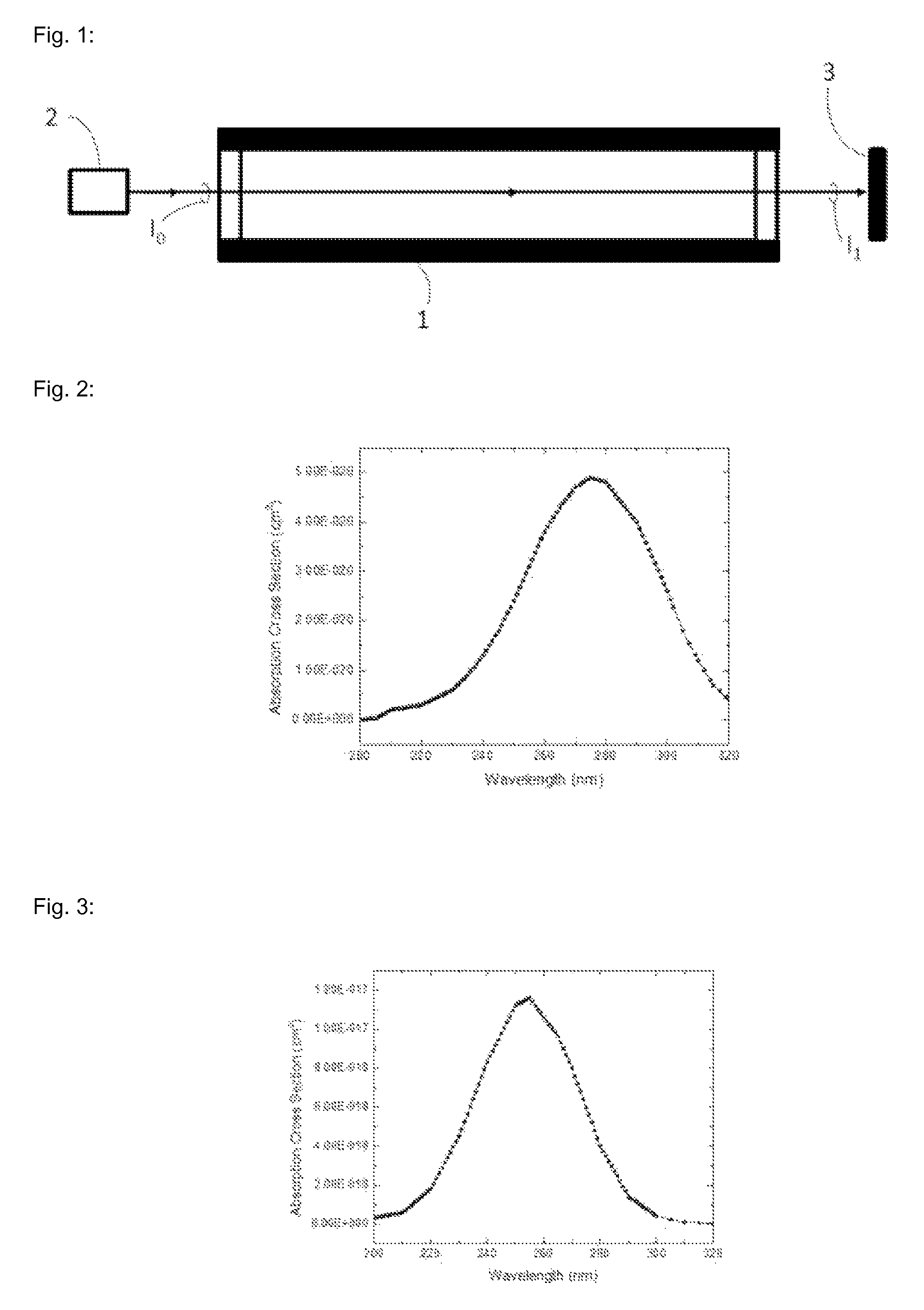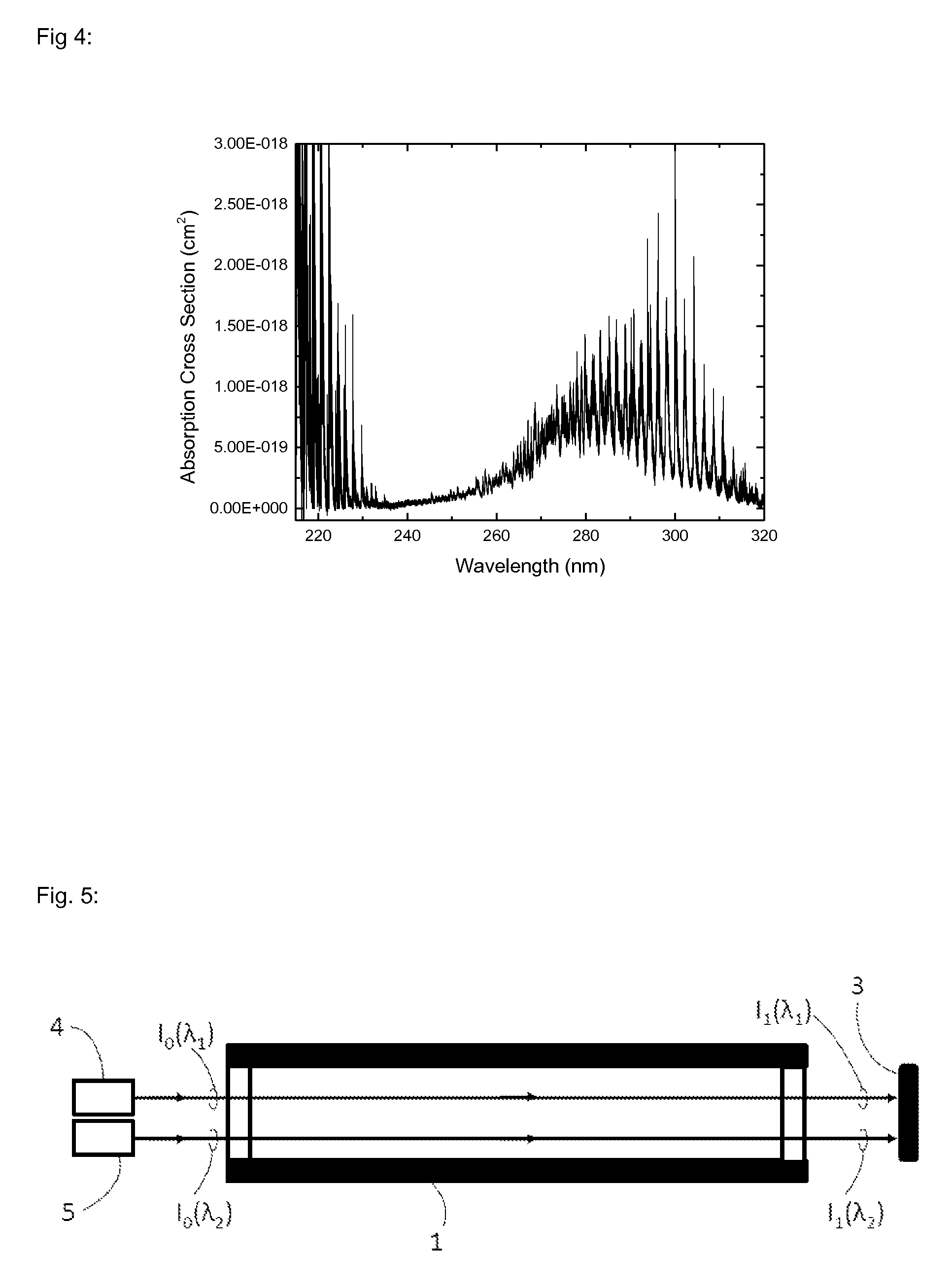Breath analyser and detection methods
a breath analysis and detection method technology, applied in the field of breath analysis apparatus for gas mixture analysis, can solve the problems of high research effort for medical diagnosis using breath analysis, diabetes is one of the most challenging problems for public health worldwide, and the condition requires lifelong management, so as to achieve accurate measurement of acetone concentration and simplify mathematical calculations
- Summary
- Abstract
- Description
- Claims
- Application Information
AI Technical Summary
Benefits of technology
Problems solved by technology
Method used
Image
Examples
example 1
Single-Wavelength Sensor
[0175]A first example of an apparatus to measure the concentration of acetone in exhaled breath is illustrated in FIG. 7. The apparatus 10 includes a chamber 1, an inlet valve 11, an outlet valve 12, a first window 13, a second window 14, a light source 2 and a first photodetector 15. The inlet valve 11 may be opened to allow a gas to flow into the chamber 1 and may be closed to seal the chamber. The outlet valve 12 may be opened to vent the gas from the chamber to allow gas to flow out of the chamber, and the valve 12 may be closed to seal the chamber. The inlet valve 11 and outlet valve 12 are preferably “light tight” so that ambient light does not enter the chamber 1 when the valves are closed. Ambient light is any light which is not emitted by the light source 2. For example, ambient light may be due to sunlight or artificial lighting in the location where the apparatus is used. Gas may be drawn into or out of the chamber using a micropump, a syringe or a...
example 2
Dual-Wavelength Sensor
[0205]A second example of an apparatus to measure the concentration of acetone in exhaled breath is illustrated in FIG. 9. The second example has many features in common with the first example. These common features are labelled using the same numerical labels as for the first example and they will not be described in detail again. The apparatus 39 includes a chamber 1, an inlet valve 11, an outlet valve 12, a first window 13, a second window 14, a first light source 4, a second light source 5 and a first photodetector 15.
[0206]The first light source 4 emits light with wavelength or wavelengths between 230 nm and 320 nm. The second light source 5 emits light with wavelength or wavelengths between 230 nm and 320 nm which are different from the wavelength or wavelengths of light emitted by the first light source.
[0207]The first and second light sources may emit light with a single wavelength or light with a range of wavelengths about a central wavelength. The fir...
example 3
Windows are Replaceable
[0235]In a third example, at least one of the first window 13 and the second window 14 may be removed from the apparatus and replaced during routine use of the apparatus. Replacement of the windows can be advantageous if any contamination has formed on the windows which causes significant absorption of UV light. In one implementation a disposable module which includes the first window 13 and the second window 14 may be removed from the apparatus and replaced.
PUM
| Property | Measurement | Unit |
|---|---|---|
| wavelength | aaaaa | aaaaa |
| wavelength | aaaaa | aaaaa |
| central wavelength | aaaaa | aaaaa |
Abstract
Description
Claims
Application Information
 Login to View More
Login to View More - R&D
- Intellectual Property
- Life Sciences
- Materials
- Tech Scout
- Unparalleled Data Quality
- Higher Quality Content
- 60% Fewer Hallucinations
Browse by: Latest US Patents, China's latest patents, Technical Efficacy Thesaurus, Application Domain, Technology Topic, Popular Technical Reports.
© 2025 PatSnap. All rights reserved.Legal|Privacy policy|Modern Slavery Act Transparency Statement|Sitemap|About US| Contact US: help@patsnap.com



